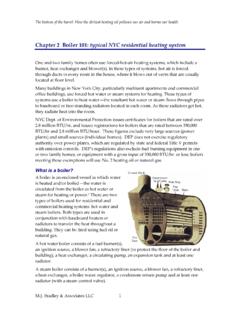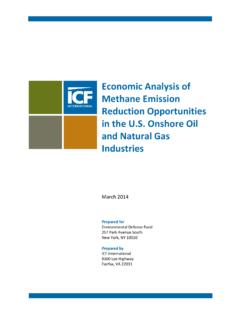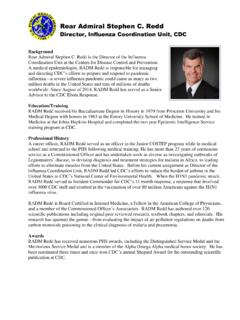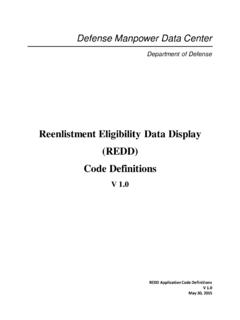Transcription of Brazil national and state REDD report 102909
1 November 2009 1 Brazil national and state redd In December 2008, Brazilian President Luiz In cio Lula da Silva announced Brazil s commitment to reduce Amazon deforestation 80% below the 1996 2006 average over the coming decade. Since deforestation accounts for approximately 70% of Brazil s national emissions, this effectively made Brazil the first major developing country to commit to national emissions reductions. With the launch of the Amazon Fund and the Government of Norway s promise of $1 billion over the next decade if the country meets its targets, Brazil inaugurated the first national level redd program, albeit one based in grant funding rather than market finance. The relative efficacy of Brazil s Action Plan for the Prevention and Control of Deforestation in the Legal Amazon (PPCDAM) in a nearly 64% decline in deforestation rates between 2004 and 2009 was critical to government s decision to take a target.
2 As the largest-scale and most effective national deforestation reduction program in a country with an active, expanding, agricultural frontier, Brazil s Action Plan and the Amazon Fund offer important lessons on the institutional and political conditions for reducing deforestation. While the Amazon Fund is still a work in progress, discussions among state and federal governments on the Fund s design are also beginning to address key redd design issues. Deforestation from 2000 2008, the Action Plan for the Prevention and Control of Deforestation in the Legal Amazon (PPCDAM) & Decree 6321/07 Driven by rising soy and beef prices and a weak currency, deforestation increased from 18,000 km in 2001 to 27,000 km in 2004, the second highest annual total on record. The Action Plan, launched in 2003, was conceived in the Environment Ministry but gained high-level political support.
3 It is coordinated by the Presidential staff (Casa Civil), and involves 13 ministries as well as the Federal Police, Federal Highway Police and Armed Forces. Major accomplishments include the creation of 148 new protected areas covering 640,000 km from 2003-2008 an area the size France largely in active agricultural frontiers (Figure 1); jailing over 700 people, including government employees, for illegal logging; and steps to restrict the market in illegally occupied public lands. Between 2004 and 2007 deforestation fell from 27,000 km to 11,200 km , about 59%. In 2008, deforestation increased by about 10%, to 12,900 km , and projections for 2009 suggest a very substantial decline. Declining commodity prices and a strengthening currency explain some of the reduction, but government s actions clearly also had an effect deforestation in frontier regions undergoing rapid conversion where protected areas were created declined.
4 The key test, however, came in August 2007 when the near-real time deforestation monitoring system, DETER, signaled an upturn, driven by rising commodity prices. By December 2007, Environment Ministry staff had formulated and secured high-level support for a list of emergency actions, approved by President Lula in Federal Decree 6321/07. The decree allowed government to focus priority actions on deforestation hotspots the 36 counties accounting for 50% of deforestation in 2007. Rural landholders in the 36 counties were required to present current descriptions of their holdings and land use, including GPS mapped geographical coordinates, to the national Institute for Colonization and Agrarian Reform (INCRA). Landholders who failed to comply within the specified time had their rural landholding cadastre certificates (CCIR) cancelled, effectively blocking access to government 2 agricultural credit (essentially the only source of agriculture credit) and preventing legal sale or conveyance of properties.
5 Further, based in Decree 6321, the national Monetary Council of the Central Bank issued a Resolution requiring proof of compliance with environmental regulations for access to official credit. The Decree also required that state and federal environmental agencies embargo illegally deforested landholdings, prohibiting the sale or purchase of goods produced in embargoed lands. (This last point has since become the basis for several high-profile lawsuits against meatpackers with illegal suppliers, as well as boycotts by various national supermarket chains.) The Decree went into effect in March, 2008. In spite of a prolonged drought and historic highs for soy and cattle prices, the national Space Research Institute (INPE) calculated 2008 deforestation at 12,900 km , or about 10% above 2007.
6 This is above the national target of 11,314 km , but still far below Brazil s national baseline of 19,500 km . While deforestation in the basin as a whole increased over the year, preliminary analysis indicates that it declined 7% in the 36 high-deforestation counties that were the object of Decree 6321. The link between commodity prices and deforestation was attenuated, if not entirely broken. The authors of the Decree themselves note, in a comprehensive evaluation of its effects, that further investments and much larger-scale economic incentives for deforestation reduction will be required in order to maintain the 2004 2008 trend (A. Lima, P. Capobianco and P. Moutinho, 2009). However, lessons drawn from the PPCDAM experience suggest some general institutional prerequisites for redd . Figure 1.
7 Amazon Protected Areas Prior to and Since PPCDAM (2002) 3 Requisites for redd Accurate, transparent deforestation monitoring. Brazil s national Space Research Institute has four programs using different sensors to monitor deforestation, all of which make data publically available -- annual high-resolution analysis to measure annual deforestation (PRODES); monthly mid-resolution monitoring of clearings over 25 ha (63 acres) to detect new deforestation for enforcement purposes (DETER); yearly analysis of forest degradation (DEGRAD); and daily monitoring of fires using NOAA and other low-resolution satellites. Environment Ministry staff were alerted to the upturn in deforestation in late 2007 by the DETER system, allowing them to formulate the policy response in time to affect events in 2008.
8 High-level political support. While the plan was designed in the Environment Ministry, it was vetted through a broad inter-ministerial group and backed by the President. When Decree 6321 provoked vehement political push-back, the Environment Minister stepped down but the policy was maintained. Understanding the drivers of deforestation. Large-scale creation of new protected areas was based in the understanding that illegal occupation of public lands not assigned to any specific function was a major cause of new deforestation, and hence, was effective. Analysis of the role of official agriculture credit in deforestation led to successful focus on agriculture credit in Decree 6321. Professional, politically relatively neutral, police force (and/or Armed Forces). Collaboration between Federal Police, Armed Forces and the Brazilian Environmental Institute (IBAMA) was central to effective law enforcement operations in frontier regions.
9 Adaptability. Environment Ministry staff were not only able to track deforestation monthly but had sufficient autonomy and political support to adapt the plan when the trend changed. The Amazon Fund toward an equitable mechanism for benefit sharing While Brazil established the Amazon Fund in the national Bank for Economic and Social Development (BNDES) and received the first donation from the Government of Norway in 2008, discussions among federal and state governments, civil society and the scientific community on its organization are ongoing. A recent proposal from the Amazon Institute for Environmental Research (IPAM) currently generating considerable attention addresses the critical issue of how redd benefits may be equitably divided among high- and low-deforestation regions. (A.)
10 Lima, O. Stella and P. Moutinho, 2009) Brazil s national Plan on Climate Change (NPCC) established national targets, based on reductions below a baseline of the average deforestation from 1996 2005, adjusted downwards over three five-year periods (Figure 2). The IPAM proposal, based on the Stock Flow with Targets concept (Cattaneo, 2009), simulated how a benefit sharing mechanism could work, using the actual reductions in Figure 2. Brazil targets and baselines. national Plan on Climate Change (NPCC ) targets -- (green line) Base lines (blue line) Actual deforestation, 1996 2006 red line 4 deforestation between 2006 and 2008 (the space between the blue and green lines for those years in Figure 1). Each state is assumed to take a target (the national target divided among the states ).


















